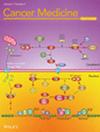Exploring Mechanisms and Biomarkers of Breast Cancer Invasion and Migration: An Explainable Gene–Pathway–Compounds Neural Network
Abstract
Backgrounds
Exploring the molecular features that drive breast cancer invasion and migration remains an important biological and clinical challenge. In recent years, the use of interpretable machine learning models has enhanced our understanding of the underlying mechanisms of disease progression.
Methods
In this study, we present a novel gene–pathway–compound-related sparse deep neural network (GPC-Net) for investigating breast cancer invasion and migration. The GPC-Net is an interpretable neural network model that utilizes molecular data to predict cancer status. It visually represents genes, pathways, and associated compounds involved in these pathways.
Results
Compared with other modeling methods, GPC-Net demonstrates superior performance. Our research identifies key genes, such as ADCY8, associated with invasive breast cancer and verifies their expression in breast cancer cells. In addition, we conducted a preliminary exploration of several pathways.
Conclusion
GPC-Net is among the pioneering deep neural networks that incorporate pathways and compounds, aiming to balance interpretability and performance. It is expected to offer a more convenient approach for future biomedical research.


 求助内容:
求助内容: 应助结果提醒方式:
应助结果提醒方式:


